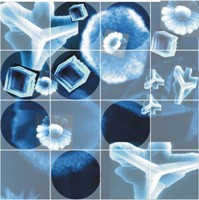|
NANOSTRUCTURED MATERIALS - K7
Head of Department Secretary In the program the connection between nanostructural constituents and final properties are studied interactively. We investigate intermetallic magnetic materials, quasicrystals, natural and synthetic materials (amorphous and crystalline nanoparticles), ceramic sensors, the consequences of mechanical wear, neutron radiation, etc. (amorphous and crystalline precipitates), SiC, Si3N4, ZnO varistors (nano-amorphous layers in polycrystalline ceramics), thin films, hetero-layered structures - spintronics, polytypic sequences (grain boundaries between various phases), perovskites, functionally gradient materials like the ceramic parts for hip-joint prostheses, thick coatings (gradients of the structure and chemical composition). Various approaches are used for processing, e.g., powder metallurgy, high-energy milling, HDDR processing, pulsed-laser deposition, processing in aqueous and non-aqueous suspensions, forming from suspensions, building layered structures on different substrates, and layers with various thicknesses (electrophoresis, electrodeposition). |
J. Stefan Institute, Jamova 39, 1000 Ljubljana, Slovenia, Telephone: +386 1 477 39 00 |


